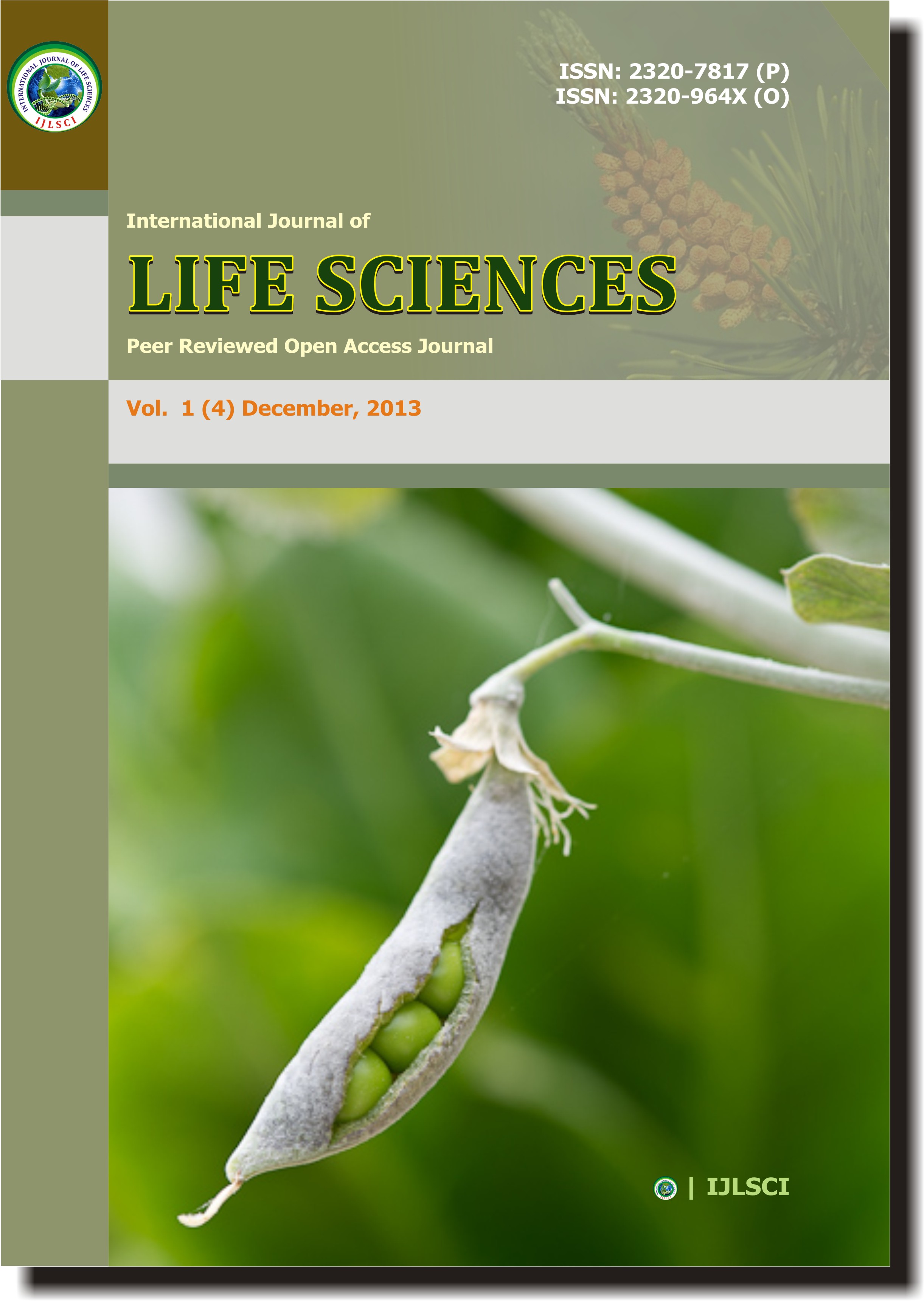Ethno-medicinal survey of some plants from villages of Khatav Tahashil (M.S.) India.
Keywords:
Khatav tahshil, herbal healers, vaidu, medicinal plantsAbstract
India is rich in biodiversity and considered to be a storehouse of medicinal plants. Local herbal healers (Vaidu) does not share their experiences with others, hence this valuable knowledge is eroding gradually under trends of modernization and due to rapid socioeconomic changes. A periodic survey was carried out with villagers of Dharpudi, and adjoining villages to record medicinal utilities of plants. These places belong to Khatav tahsil (District Satara). The rural people from this region use various plants to treat different ailments and diseases. Total 52 plants were identified and enlisted for their medicinal values to cure diseases like gynecological problems, asthma, cold, cough, dysentery, jaundice, piles, and skin diseases.Plants mostly used by local knowledgeable persons for medicinal purposes are Acacia nilotica (L.) Willd., Aegle marmelos (L.) Corr., Argemone Mexicana Linn., Boerhavia diffusa Linn., Caralluma adscendens var. fimbriata (Wall.) Grav. & Mayur, Chrozophora rottleri (Geis.) Juss, Citrulus colocynthis (L.) Schrad., Datura metel Linn., Ficus religiosa Linn., Glossocardia bosvallea (L. f.) DC., Macrotyloma uniflora (Lam.) Verdc., Nyctanthes arbor-tristis Linn., Sesamum laciniatum Klein ex Willd., Vernonia anthelmintica (L.) Willd., Withania somnifera (L.) Dunal. This is participatory effort towards creating awareness about medicinal utilities of plants and need of conservation.
Downloads
References
Araujo EL, Castro CC and Albuquerque UP (2007) Dynamics of Brazilian Caatinga - A review concerning the plants, environment and people. Functional Ecosystems and Communities 1, 15-28.
Cooke T (1967) (Rpr.).The Flora of Presidency of Bombay.Vol. II. Botanical Survey of India. Calcutta.
Dwivedi SN, Shrivastava Satyaendra, Dwivedi Sangeeta, Dwivedi Abhishek, Dwivedi Sumeet and Kaul Shefali (2007) “Relevance of medicinal herbs used in traditional system of medicine”, Farmavita. Net,.
Ekka RN and Dixit VK (2007)“Ethno-pharmacognostical studies of medicinal plants of Jaspur District, Chattisgaeh”, Int. Jour. Of Green Phar. 1(1): 2-4.
Gupta R, Vairale MG, Deshmukh RR, Chaudhari PR, Wate SR (2010) “ Ethnomedicinal uses of some plants by Gond tribe of Bhandara district, Maharashtra”. India Journal of Traditional Knowledge, 9 (4):713-717.
Heda NK (2012) Folk conservation practices of the Gond tribe of Mendha (Lekha) village of centera India. India Journal of Traditional Knowledge, 11 (4),: 727-732.
Hooker JD (1872-1977) The flora of British India.Vol.I – VII. London.
Kathe Wolfgang (2005) The revision of the “WHO/IUCN/WWF guidelines on the conservation of medicinal plants”: a step forward in medicinal plant conservation and sustainable use. Herbal Gram., 66:60-61.
Mossi AJ, Mazutti Paroul M, Corazza N Dariva ML, Cansian C and Oliveira RL (2009) Chemical variation of tannins and triterpenes in Brazilian populations of Maytenus ilicifolia Mart. Ex Reiss Brazilian Journal of Biology, 69 (2): 339-345.
Naik VN (1998) Flora of Marathwada. Vol. I & II, Amurt Prakashan, Aurangabad.
Parrotta John A (2001) Healing Plants of Peninsular India. CABI Publishing USA.
Patil HS and Yadav SR (1991) Preliminary Survey of Khatav Tahsil. M.Phil. Theses, Shivaji Uni. Kolhapur
Sebastian MK and Bhandari MM (1984) “Medico-ethno botany of Mount Abu Rajasthan, India”. J. Ethnopharmacol. 12 (2): 223-30.
Siber SS, and Albuquerque UP (2010) “Metods participativos na pesquisa etnobiologica”. in. Albuquerque UP, Lucena RFP, Cunha LVFC (Eds) Metodos e Tecnicas na pesquisa Etnobiologica (Vol 1, Estudos), NUPEEFA, Recife, pp 85-106
Sieber SS, Medeiros PM, Albuquerque UP (2010) “Local perception of environmental change in a semi-arid area of northeast Brazil: a new approach for the use of participatory methods at the level of family units”. Journal of Agricultural and Environmental Ethics in press.
Singh NP and Karthikeyan S (2000) Flora of Maharashtra state Vol. 1-3. Botanical Survey of India. Calcutta.
Trivedi PC (2002). Ethno-medical Plants of Rajasthan State, India. In: Ethnobotany, Trivedi, P.C. (Ed.). Aavishkar Publishers, Jaipur.
Yadav SR and Sardesai MM (2002) Flora of Kolhapur District. Shivaji University Press, Kolhapur.
Zingare AK (2012) Ethnomedicinal uses of plants among the Halba tribe of Gondia District of Maharashtra, India. Bionano Frontier. Special Issue, pp 121-125.
Downloads
Published
How to Cite
Issue
Section
License
Copyright (c) 2013 Authors

This work is licensed under a Creative Commons Attribution-NonCommercial-NoDerivatives 4.0 International License.
Open Access This article is licensed under a Creative Commons Attribution 4.0 International License, which permits use, sharing, adaptation, distribution and reproduction in any medium or format, as long as you give appropriate credit to the original author(s) and the source, provide a link to the Creative Commons license, and indicate if changes were made. The images or other third party material in this article are included in the article’s Creative Commons license unless indicated otherwise in a credit line to the material. If the material is not included in the article’s Creative Commons license and your intended use is not permitted by statutory regulation or exceeds the permitted use, you will need to obtain permission directly from the copyright holder. To view a copy of this license, visit http://creativecommons.org/ licenses/by/4.0/











